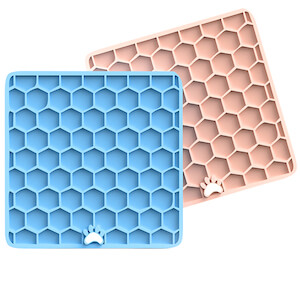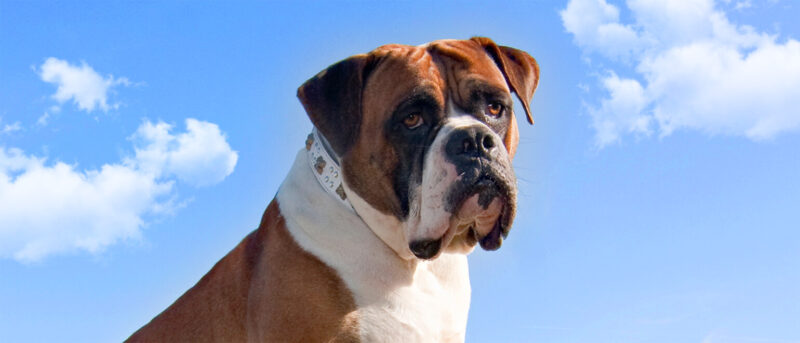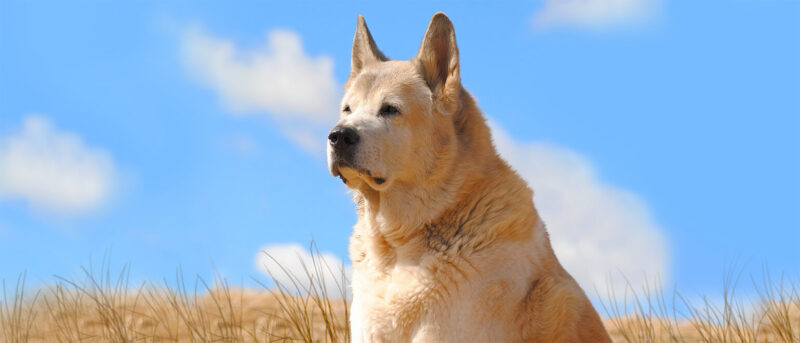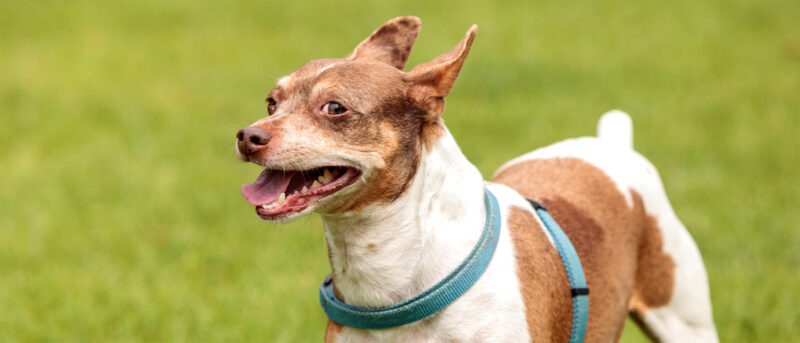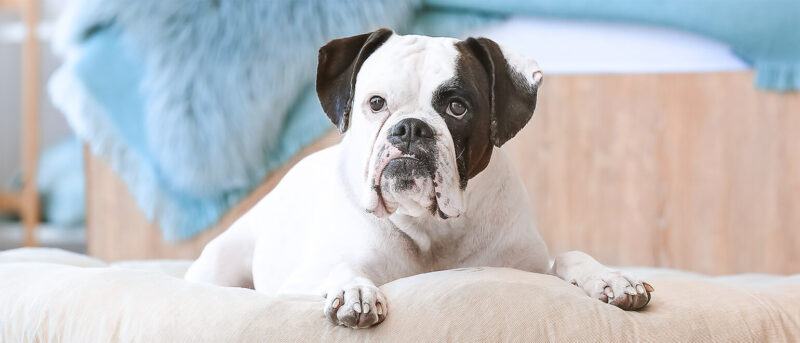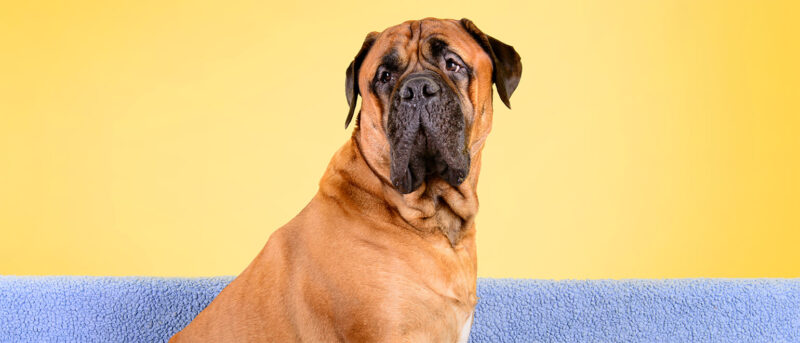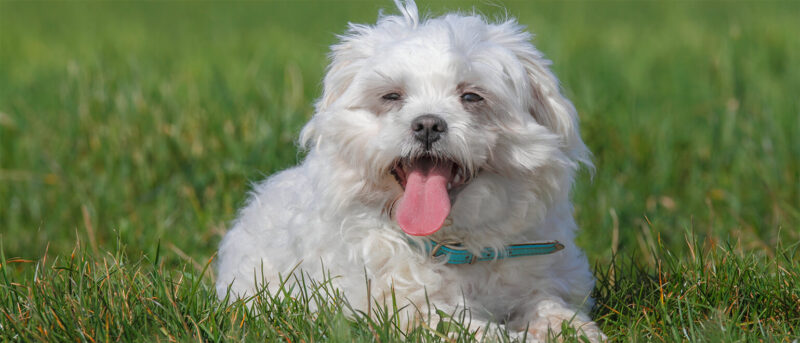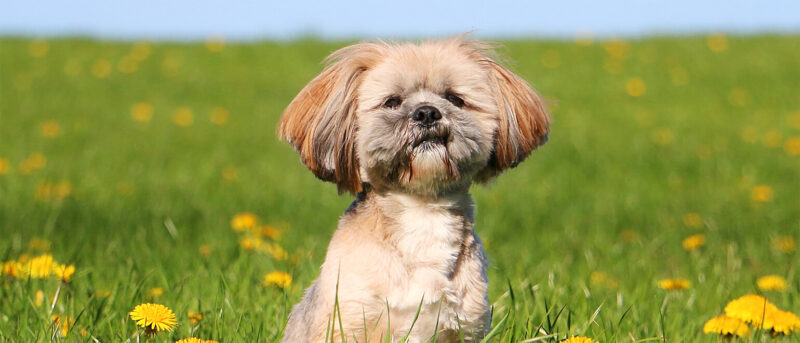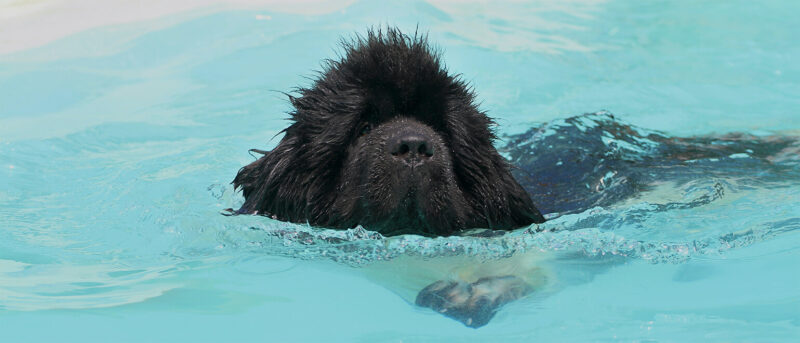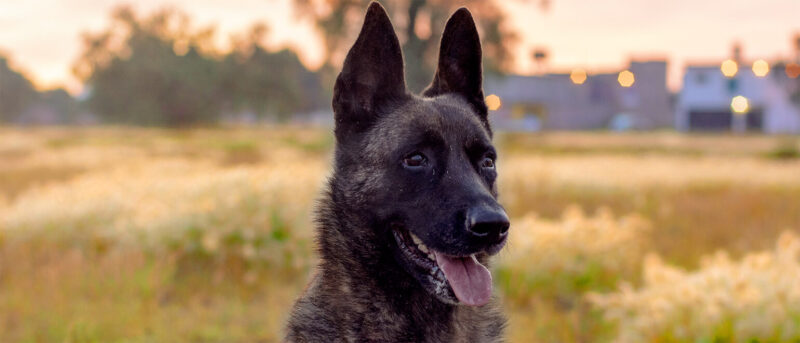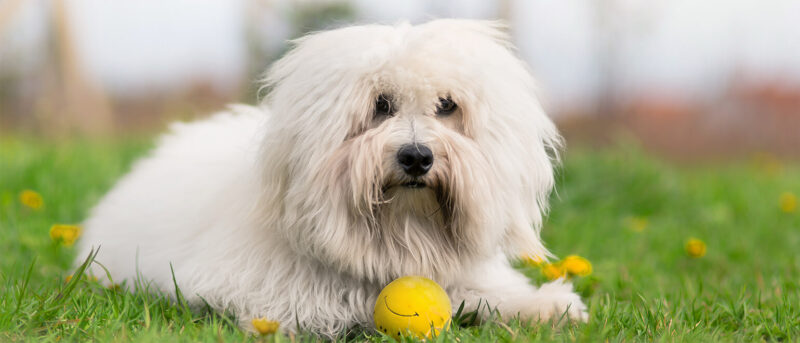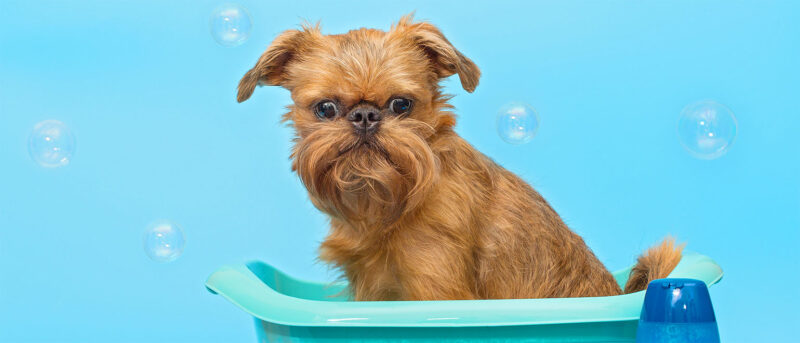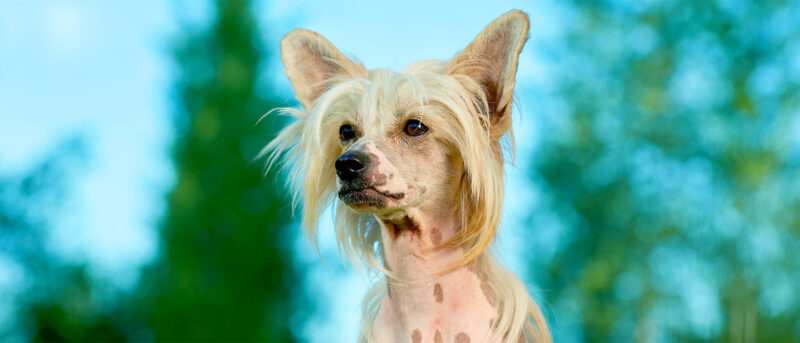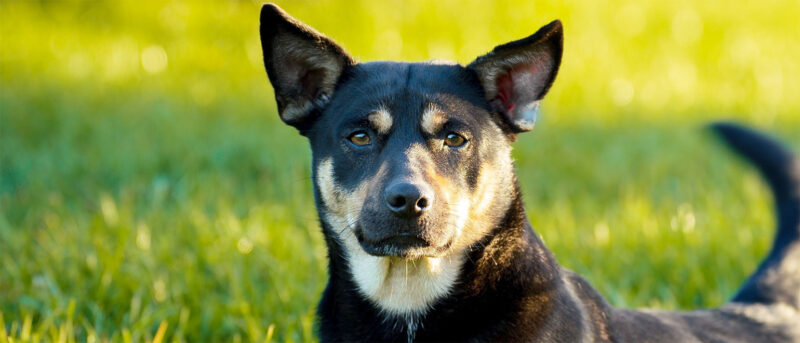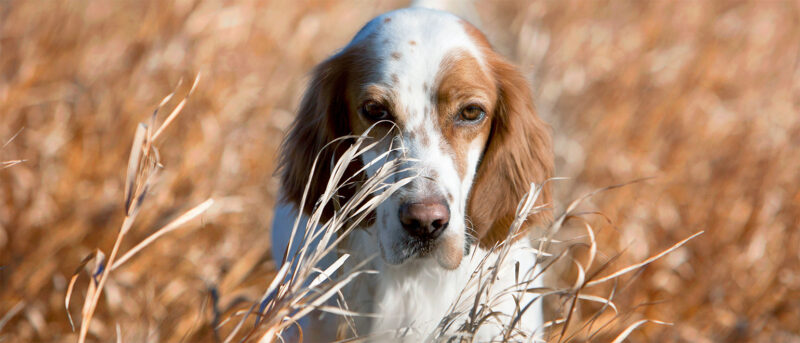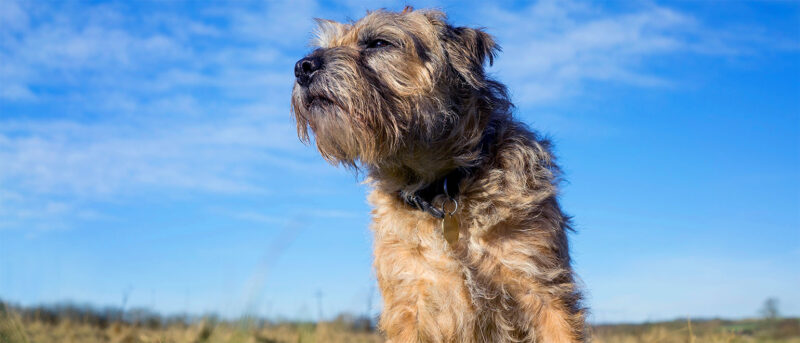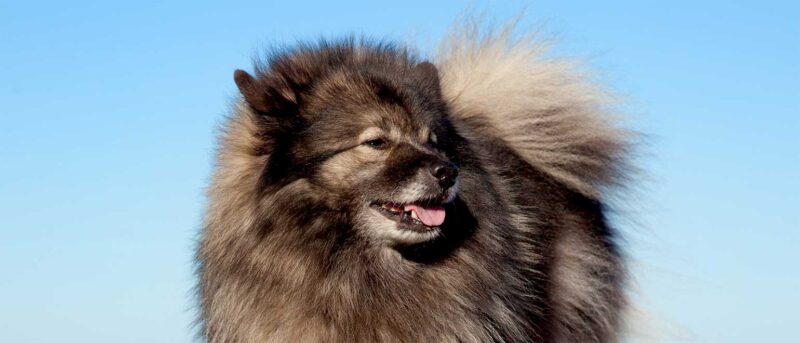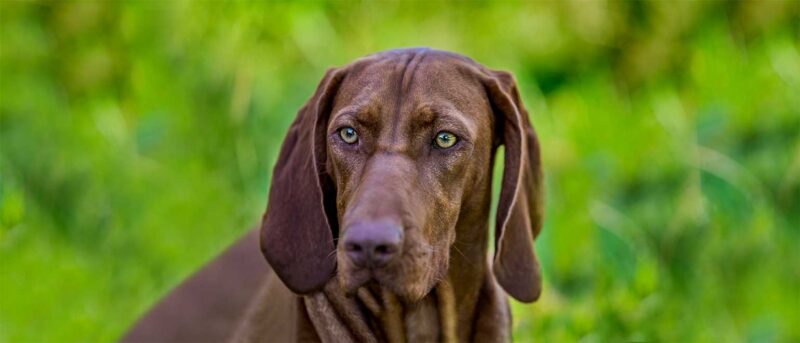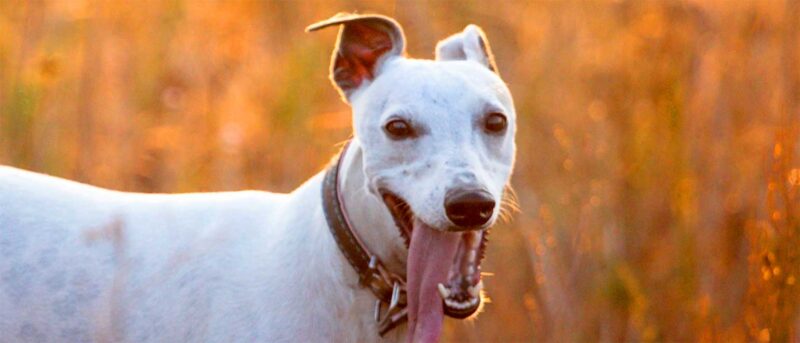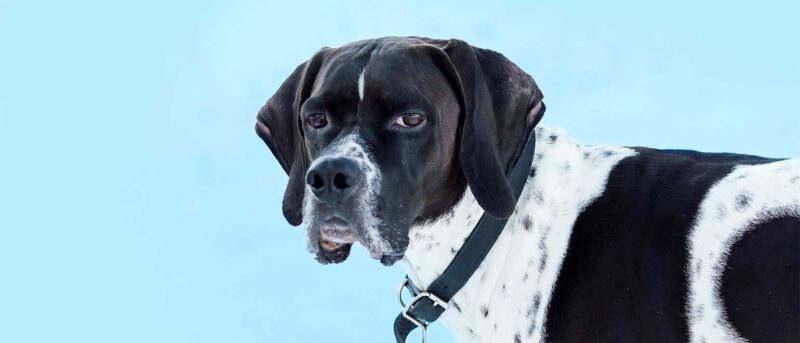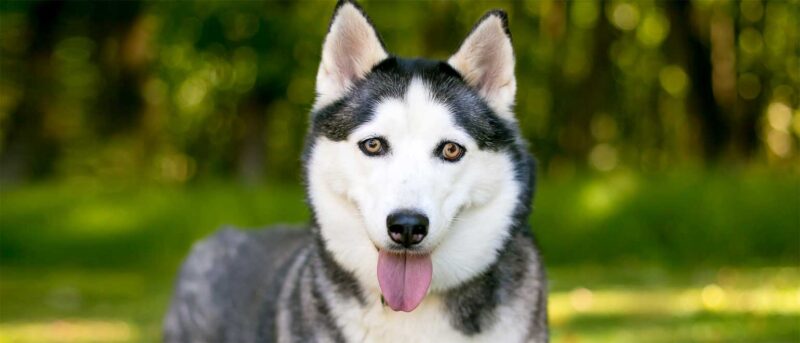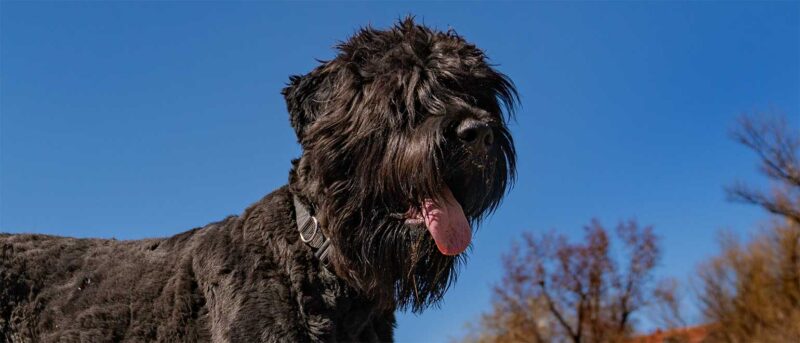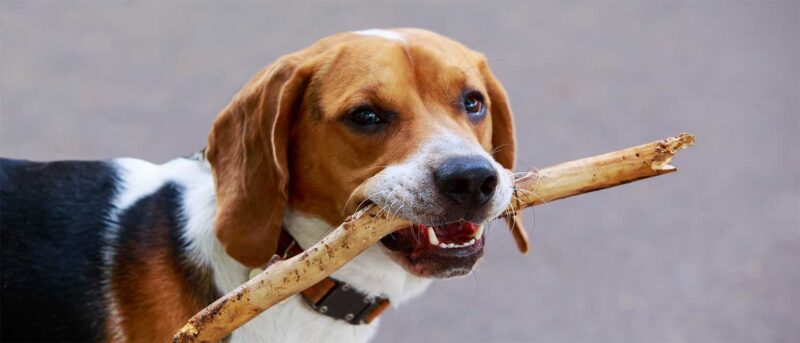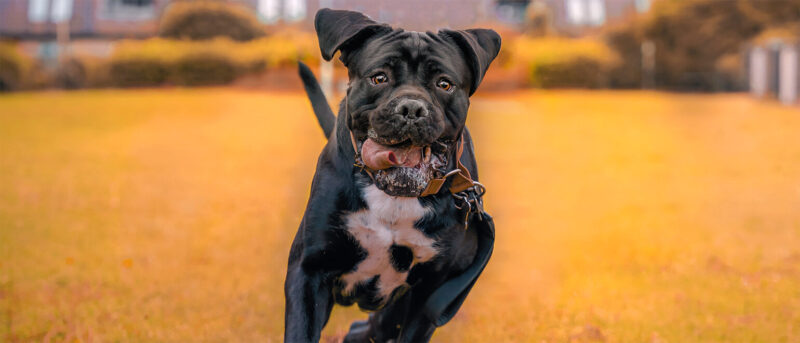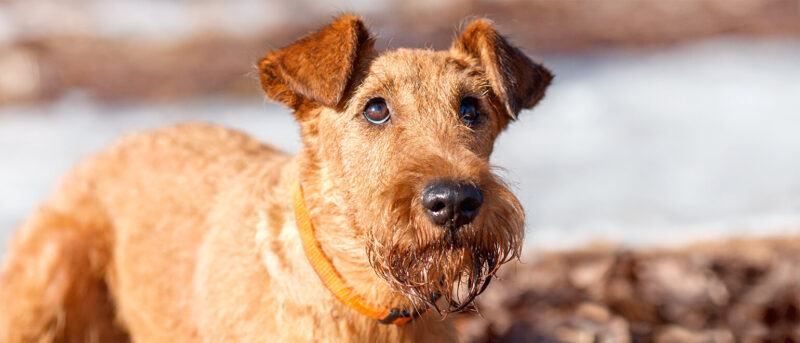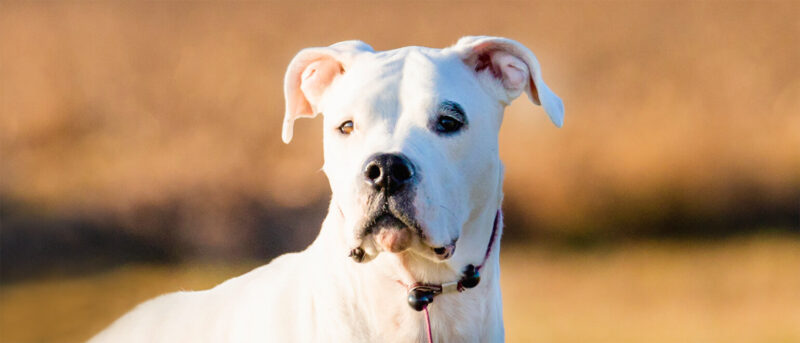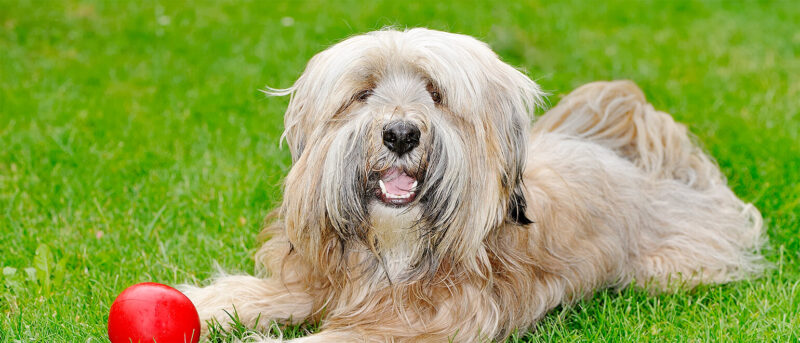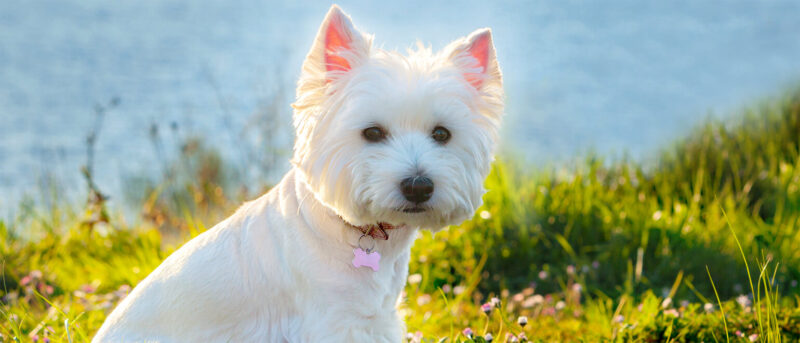Dachshund Breed Guide [All About the Lively Wiener Dog]
Affectionately referred to as ‘the wiener dog’, ‘the doxy’, and of course, ‘the sausage dog’, the Dachshund is a popular breed known for its long body and short little legs. The Doxie is one of the most popular dog breeds in the world for a multitude of reasons. Small in size but big in personality, […]
Affectionately referred to as ‘the wiener dog’, ‘the doxy’, and of course, ‘the sausage dog’, the Dachshund is a popular breed known for its long body and short little legs. The Doxie is one of the most popular dog breeds in the world for a multitude of reasons.
Small in size but big in personality, the Dachshund is famous for its spunky and independent disposition. These playful and energetic pups enjoy walks outside and plenty of playtime. This quirky dog breed can be a bit stubborn but mostly, they just want to spend time with you and are very loving and loyal.
Is this breed right for your home? To learn more about the unique Dachshund and how to properly care for them, just read on as we discuss the adorable sausage dog.
Dachshund Characteristics [Physical]
This one-of-a-kind breed is known for its iconic appearance. The Dachshund always garners a lot of attention from passersby even though they are quite low to the ground. The wiener dog has many other fascinating traits beyond its stubby legs and long body. Let’s dive into what makes a Dachshund, a Dachshund!
Dachshund Dog Breed Size
The Dachshund is available in two sizes: miniature and standard.
Standard Dachshunds typically weigh between 16 and 32 pounds and stand 14 to 18 inches tall. Miniature Dachshunds, as per the official breed standard set by the American Kennel Club, weigh 11 pounds or less and stand five to six inches tall.
Head
The wiener dog’s head tapers evenly to the tip of its nose. Its skull has a slight arch, mirroring the contour of its muzzle. The Dachshund’s eyes are medium-sized and almond-shaped and are typically darkly colored. The ears of the Dachshund are positioned near the crown of the head and are rounded in shape.
Body
This breed has a long, muscular neck that elegantly blends into the shoulders. Their trunk is elongated (hello, hot dog) and muscular. When seen from the side, the back appears notably straight. The forequarters are strong, deep, and muscular, complemented by powerful thighs.
Despite their stubby little legs, the Dachshund has a fluid and smooth gait. Thanks to their build and agility, these pups have a great amount of endurance.
Dachshund Personality
Although they are famous for their goofy and loving personalities, Dachshunds were originally bred as hunters. Today, the Dachshund is a snuggly lap dog, brimming with confidence and spunk!
Energetic and vigilant, this breed remains remarkably playful, requiring ample exercise and daily attention. Despite their small size, the Dachshund may exhibit destructive behaviors without proper stimulation. Courageous and spirited, the feisty weiner dog thrives in an active household with loving family members.
Highly intelligent, this dog excels at learning new tricks and enjoys playing games, especially when it’s on their terms. While eager to engage, this breed can display stubborn tendencies, requiring consistent and patient training methods.
The Dachshund displays remarkable loyalty, shadowing you from one room to another and participating in your daily activities, whether you’re watching a movie, folding laundry, or tying your shoes. This breed often forms strong attachments to their favorite person and may exhibit signs of jealousy if your attention is directed towards other dogs or people.
Dachshund Dog Breed Exercise
Doxie puppies require only five minutes of daily exercise for each month of their age. Until they are four to six months old, gentle play indoors or in your backyard is ideal. This allows them to gradually transition to daily walks. Once matured, an adult Dachshund dog should complete around 30 minutes of exercise daily. As they become senior dogs, you want to adapt to a slower pace or shorter walks.
Dachshund Training
As is the case with most dogs, the Dachshund should be trained and socialized during their puppy years. Obedience class is also a must. These classes not only offer valuable training but also provide you with consistent techniques to use at home. Consistency is key when dealing with Dachshunds, as they can exhibit stubborn tendencies.
While Dachshunds are generally not aggressive, it’s important to socialize your wiener dog properly to prevent any reactive or snapping tendencies. Negative behaviors like these may arise when the Dachshund feels neglected or jealous, or when playtime doesn’t satisfy them.
During puppyhood, focus on teaching your Dachshund puppy basic commands. Consistency and positive reinforcement are key, as these methods help your dog learn swiftly. Additionally, there are a few essential behaviors to focus on while training your Dachshund. Read on to learn more.
Prey Drive
Because of the wiener dog’s hunting origins, they tend to chase after various things, such as people (especially young kids), wild animals, and other pets. It’s not unusual for a Dachshund to rabidly pursue a squirrel in the park or chase after your indoor cats. Addressing this bad behavior early is crucial. It’s important to teach your Dachshund that such actions are undesirable.
Digging
Dachshunds are notorious for their tendency to dig, whether it’s in the garden outside or on your bed sheets. They are particularly prone to digging when they are bored or understimulated. To discourage this obsessive behavior, it’s best to first tire out your wiener dog with exercise and then spend quality bonding time with them afterward.
If your Dachshund continues digging despite your best efforts, it’s recommended that you designate a specific area where digging is allowed. This not only protects your garden from destruction but also discourages them from digging near fences and potentially escaping underneath.
Barking
Despite their small size, Dachshunds possess a loud bark and tend to bark frequently. To curb excessive barking, it’s important to train your Dachshund by consistently not rewarding their barks with attention or food. When they realize that barking doesn’t give them the attention or food that they want, they are likely to realize their barking is unhelpful in getting what they want.
Once your dog becomes silent, offer them a reward in the form of a dog treat and use a command like “quiet” or a similar demand. With consistent reinforcement, they will learn that being quiet is more effective than barking.
Dachshund Dog Breed History
Lovers of the spirited and sturdy Dachshund are frequently surprised to discover that this small dog breed has its roots as a hunting dog.
Originating in Germany during the 17th century, the Dachshund breed was developed for the specific purpose of hunting badgers. Every aspect of the dachshund’s unique physique was tailored to this task: their short legs, loose skin, and ample chests facilitated digging and maneuvering through badger tunnels. Their floppy ears served to shield them from dirt and debris while burrowing. Their inherent determination and courage made them well-suited for confronting and battling badgers.
As the reputation of the Dachshund’s abilities grew, the breed underwent further development, leading to the emergence of two distinct sizes. The standard size was utilized for hunting not only badgers but also wild boars. Meanwhile, the miniature Dachshund was specifically bred for hunting rabbits and foxes.
Dachshunds were introduced to the United States around 1885 and simultaneously recognized by the American Kennel Club as an official breed. Their popularity surged during the 1930s and 1940s because of their distinctive appearance and captivating personalities. As of 2021, the Dachshund has claimed a spot among the world’s top 10 most popular dog breeds!
Common Health Problems Found in the Dachshund Dog
When buying purebred dogs, it’s of the utmost importance to only purchase a Dachshund puppy from an ethical and reputable breeder, registered with the American Kennel Club. Dogs bred according to these standards are generally less prone to health issues, as dogs carrying problematic genes are typically excluded from the breeding program.
Dachshunds are prone to a few hereditary health issues that are common within the breed. Here are some to keep in mind:
- Intervertebral disc disease: Also referred to as a “slipped disc”, this condition occurs when the space between the bones and along the spine (called intervertebral discs) swell or ruptures over time. When this condition occurs, you may notice your dog limping or having issues with mobility.
- Diabetes: A Dachshund with diabetes lacks insulin, leading to glucose leaking into the urine. This results in increased urination and excessive thirst in your dog. Additionally, you may observe lethargic behaviors in your dog. Fortunately, there are treatment options available for dogs with diabetes, but early detection is crucial.
- Epilepsy: Affecting .75% of the entire canine population is Epilepsy. The most common neurological disorder in dogs, this condition is hallmarked by recurring seizures in dogs. Thankfully, this issue can be managed with proper veterinary care.
- Gastric dilation: Commonly referred to as bloat, this issue is common with dogs with wide chests. Bloat is a life-threatening condition for dogs that makes the stomach dangerously expand and rotate, cutting off blood supply to their stomach and spleen.
The Dachshund’s unique physique, characterized by short legs and a long spine, occasionally sparks controversy. Approximately 90% of Dachshund back issues stem from intervertebral disc disease, associated with their dwarfism genes. It’s crucial to closely monitor your Dachshund’s back, observing both their physical appearance and their gait.
How to Care for a Dachshund
Early obedience training is essential for Dachshunds. Proper training and socialization during puppyhood are key to preventing undesirable behavioral issues and potential problems as they mature.
Housebreaking Dachshunds can pose a challenge, so it’s wise to have plenty of pee pads around the house and consistently take time to train them to go potty outside. This process demands considerable time and effort daily when they are puppies.
Spending quality time with your Dachshund is the best way to prevent destructive behavior and anxiety. This breed thrives on stimulation and requires significant interaction. If you work long hours, exceeding eight hours a day, a Dachshund may not be the most suitable breed for your busy lifestyle.
A wiener dog also needs a lot of exercise! This short dog breed is prone to weight gain, so it’s a good idea to keep them active throughout the day. Multiple short walks daily and plenty of playtime are great ways to prevent obesity.
That being said, don’t overexert your Dachshund. This breed has a sensitive back that must be protected. Up to 25% of Dachshunds may experience intervertebral disc disease, which can result in spinal disc deterioration. Don’t allow your Dachshund to repeatedly jump up and down from furniture. You may also want to consider providing ramps to help your Dachshund access the couch and bed safely.
Nutrition and Feeding for a Dachshund
Given their predisposition to obesity, it’s crucial to feed these dogs an appropriate amount of food. Opt for high-quality dry kibble made with a balance of protein, carbohydrates, grains, vegetables, oils, fats, and essential vitamins and minerals.
Typically, Dachshunds consume between half a cup to 3/4 cup of food per day, depending on the size of your Dachshund. If you’re uncertain about the appropriate portion size for your dog, consult your veterinarian. They can also recommend a specialized diet if your Dachshund is overweight.
To mitigate the risk of bloat, it’s best to divide the Dachshund’s daily food allowance into two smaller meals. Feed them half of their daily food portions in the morning for breakfast and the remaining half at night for dinner. Allowing your dog to rest after each meal can further reduce the likelihood of bloat.
Coat Color and Grooming
Dachshunds exhibit a wide variety of coat colors and patterns. Dachshunds with a solid color often appear in shades of red or cream. Two-colored Dachshunds can feature any combination of colors, including:
- Black
- Cream
- Tan
- Grey/Blue
- Chocolate
- Fawn
Furthermore, Dachshunds also come in the following coat patterns:
- Brindle
- Dapple
- Double Dapple
- Sable
- Piebald
This adorable breed also comes in three different coat types, including:
- Smooth Dachshunds: This coat has a sleek and shiny appearance. Their fur is short and dense. The texture feels soft and plush.
- Wirehaired Dachshunds: This is a newer coat variation that was developed to be more resistant to extreme weather. Their surface coat appears bristly and rough textured.
- Longhaired Dachshunds: This coat variation has long, flowing fur that’s sleek and slightly wavy. This Dachsund’s ears and legs also have feathering.
Dachshunds with smooth coats require minimal grooming. Smooth doxies only need to be brushed once a week to minimize shedding and maintain their coat’s luster and health. On the other hand, longhaired Dachshunds require daily grooming to prevent their fur from tangling.
In addition to grooming their coats, it’s best to brush your Doxie’s teeth daily to prevent any unwanted dental problems. Once you start to hear their nails clicking on the floor, it’s time to give them a clip. It’s also important to check their ears for dirt and wax buildup. You can use a soft cotton swab to gently remove any debris you notice.
Children and Other Pets
When properly socialized as a puppy, the Doxie is a friendly and loyal dog. However, this breed is not considered ideal for homes with small children.
It’s of the utmost importance to educate children on how to properly handle this breed of dog. Not only does this prevent potential back injuries resulting from improper handling, but it also helps avoid irritating this stubborn breed. If Dachshunds feel uncomfortable due to a child’s tail pulling or rough petting, they may respond by becoming snappy.
Make sure to always supervise your children when they are playing with a Dachshund to ensure the dog isn’t uncomfortable.
Dachshunds are famous for their high prey drives stemming from their hunting heritage. As a result, these dogs may not be the most compatible companions for cats, rats, or other small pets. Early socialization can aid in minimizing their instinct to chase, but it’s essential to always supervise interactions between Dachshunds and other smaller animals.
Dachshund Dog Rescue Groups
Dachshunds and Dachshund mixes can pose a bit of a challenge for new dog owners due to their stubborn nature, need for attention, and activity levels. Some families may find them overwhelming, particularly if they are unprepared for these traits. Additionally, compatibility issues may arise with children or small pets already in the home, prompting some owners to reconsider their choice of dog.
Fortunately, there are many wonderful rescue organizations dedicated to aiding Dachshunds in need of new homes. These rescue groups often offer support to families seeking to rehome their dogs, assisting throughout the process. Additionally, they may foster Dachshunds, helping them to find forever homes.
Little Paws Dachshund Rescue plays a vital role in rehoming Dachshunds along the East Coast of the United States. Their focus lies in finding forever homes for Dachshunds that have been abandoned or mistreated. In addition to rehoming efforts, they also prioritize educating the public about the breed, ensuring that potential owners are well-informed and equipped to care for these iconic dogs.
The Dachshund Rescue of North America is a fabulous nonprofit that helps rescue and rehabilitate wiener dogs in need of a home. Impressively, they’ve placed almost 12,000 dogs in loving, forever homes!
In our home state of California, the Southern California Dachshund Relief Inc. has been instrumental in rescuing Dachshunds in need of a home throughout central, southern, and northern California. Founded in 1994, this group’s goal is to find forever homes throughout the Golden State.
The volunteers of Dachshund Rescue of Los Angeles are dedicated to a noble mission: decreasing the euthanasia rates of Dachshunds in local shelters while spreading knowledge about this adorable breed and finding loving homes for these homeless dogs.
Dachshund Dog Breed Organizations
Dog breed organizations throughout the country help to foster a sense of community among Dachshund owners. These organizations host events and tournaments tailored specifically for Dachshunds, offering opportunities for owners to connect and share their love for the breed. Additionally, they spread information about judging standards and responsible breeding practices, ensuring the continued well-being and preservation of the Dachshund breed.
The Dachshund Club of America is dedicated to championing the qualities of purebred Dachshunds. Through education and membership opportunities, they engage with passionate Dachshund owners who seek deeper involvement. Guided by their mission statement, which reads, “The Dachshund Club of America promotes canine health and well-being and ethical sportsmanship in all competitions and protects and advances the interest of the breed”, you can find chapters of this club nationwide.
There are many organizations in the US, just search for one in your state to meet other Dachshund owners in your area!
More About the Dachshund
Did you know “Dachshund” literally translates to “badger dog” in German? Given their early history of being developed to hunt badgers, this makes complete sense. There are many cute nicknames for this long-bodied breed, including:
- Dachsie
- Dachshund
- Dachshund Dog
- Dachshund Mix
- Dachshund Wiener Dog
- Dachshunds
- Daschie
- Datsun
- Dashie
- Doxie
- Doxie Dog
- Doxin
- Doxin Dog
- Sausage Dog
- Weenie Dog
- Weeny Dog
- Weenies
- Weens
During the Second World War, the Dachshund became briefly known as the “badger dog” in the United States. This allowed the breed to remain popular during a time when sentiments against all things German were on the rise. This ended up being a smart choice as the Dachshund is now more popular than ever.
We discussed earlier how these dogs tend to bark a lot. Due to their barrel-like chest, their barks are much louder and deeper compared to other smaller dogs, making the Dachshund bark sound similar to a big dog’s bark. This loud bark is perfectly instep with the weenie’s big and bold personality.
The sausage dog thoroughly enjoys running and playing, and in the past, Wiener Races were quite a hit among Dachshund owners and dog lovers alike. These events, where Dachshunds raced, delighted spectators with the amusing sight of these long, short dogs sprinting around. However, the American Kennel Club has recently opposed this practice due to concerns over the breed’s back health.
Due to their elongated bodies, this breed is prone to back issues, making it essential to monitor their movements and provide them ramps for elevated surfaces like your bed or couch. Spending ample time playing and cuddling with your Doxie is crucial for their well-being. If you have the time and affection to spare, Dachshunds make excellent furry friends for families without small children. In return for your love and care, you’ll gain a devoted and affectionate dog who loves to be by your side.







